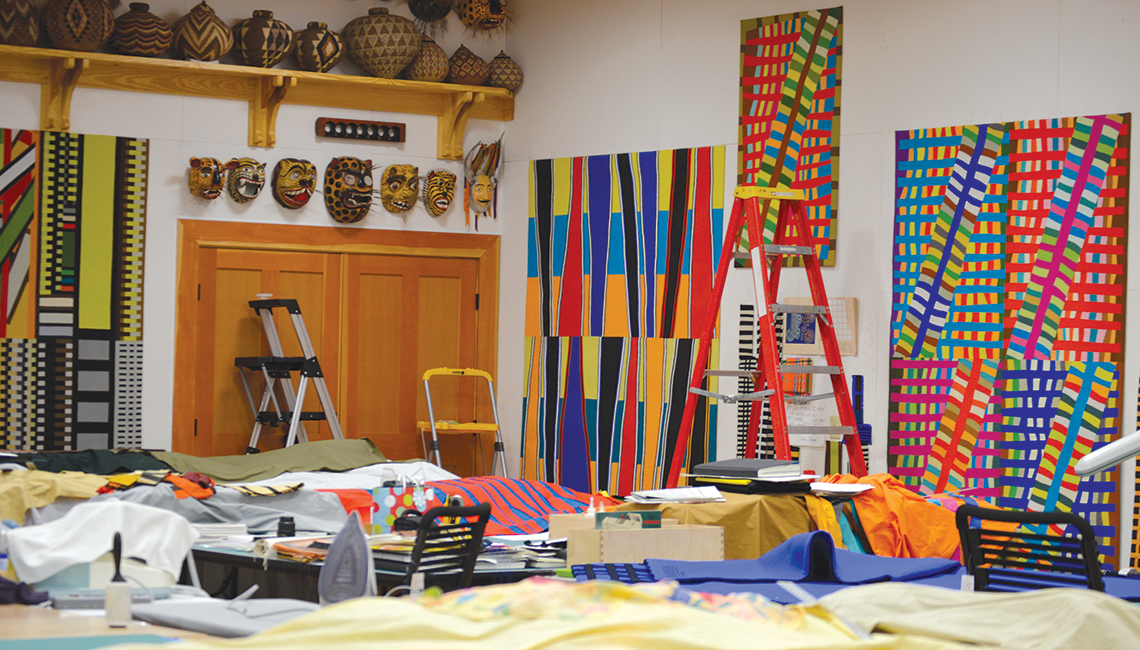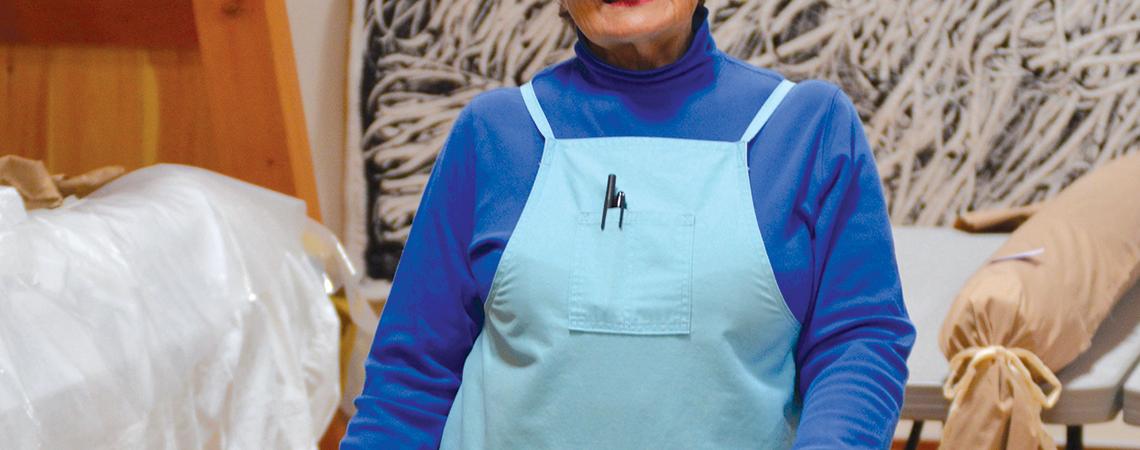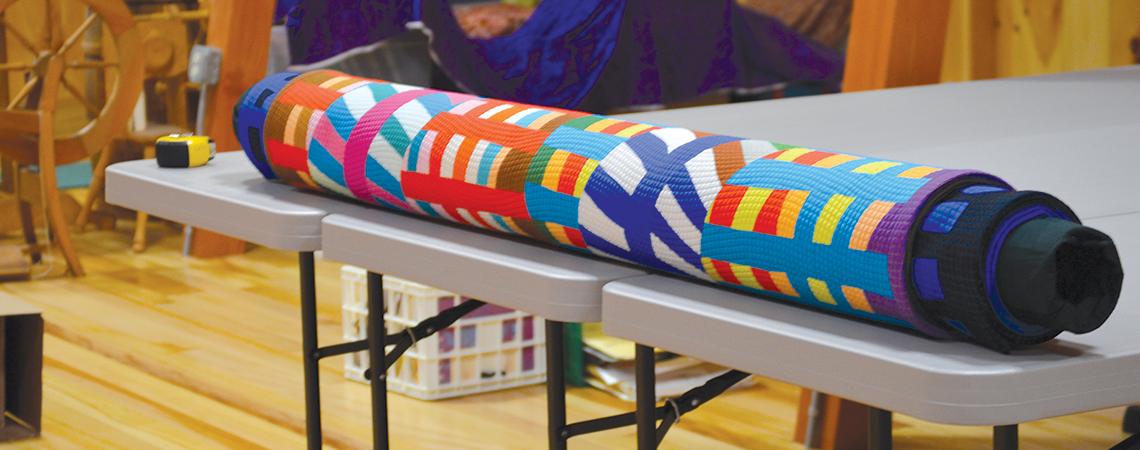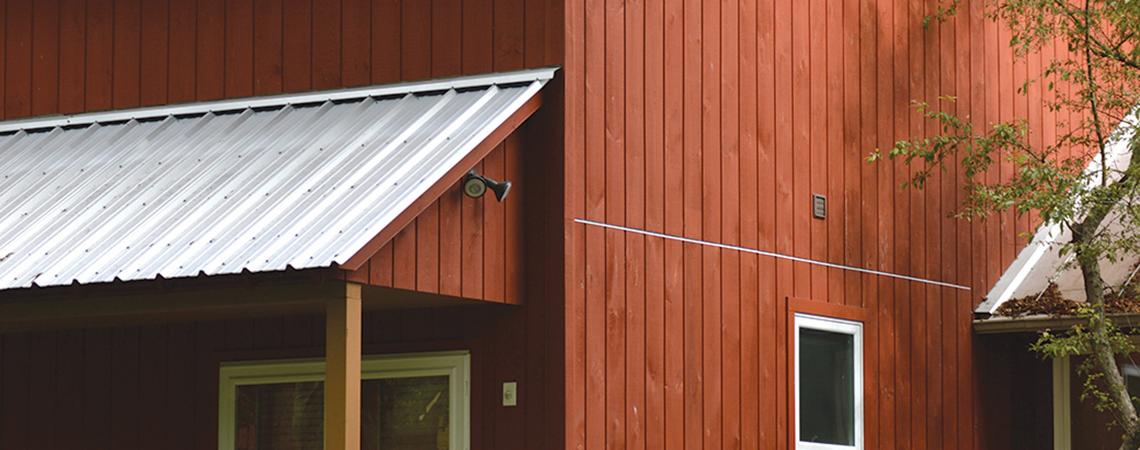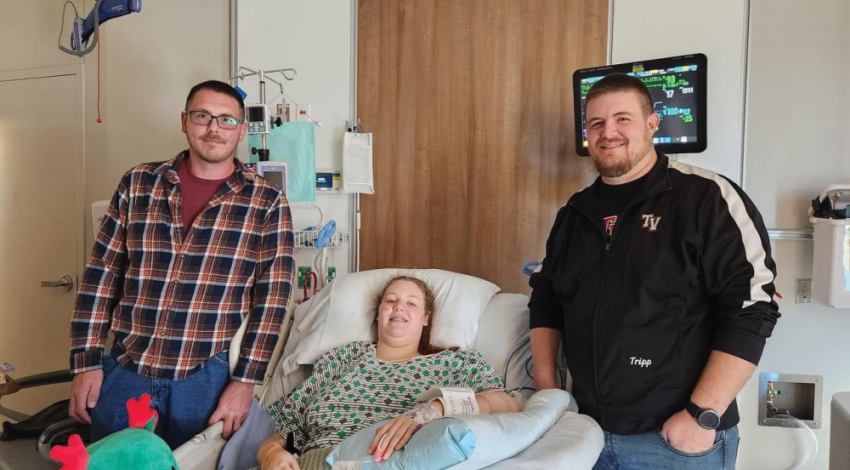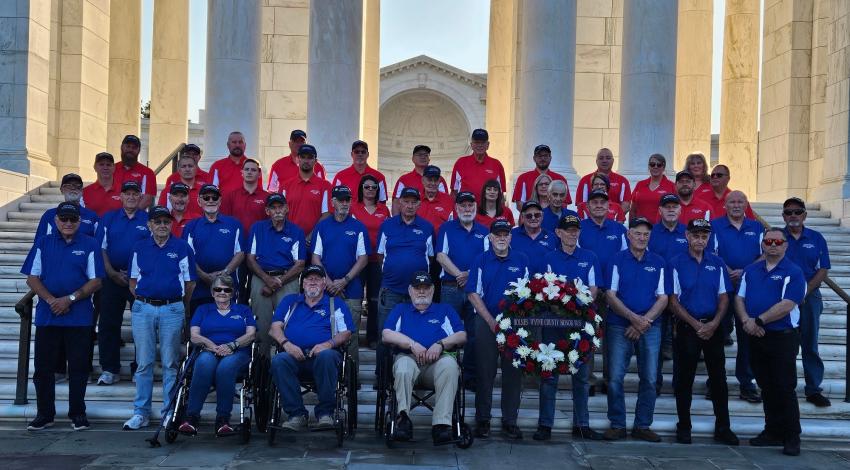Nancy Crow’s quilts hang in the Smithsonian and the Museum of Folk Art. They’ve been on exhibit in China, England, France, and other countries. Some of her quilts even appear on the covers of two of Maya Angelou’s books.
Crow has curated quilt exhibits in the U.S. and abroad. The six books she wrote on specialized quilting and fabric art techniques will be valuable references for artisans for years to come.
She’s even been inducted into the International Quilting Hall of Fame.
In short, Crow, a member of South Central Power Company, is a star in the quilting world.
Nancy Crow has written six books on specialized quilting and fabric art techniques.
Surprisingly, for a fabric artist as accomplished as Crow is, she did not learn to sew when she was young. She became an avid knitter in high school, but didn’t create any fabric art until she took a course in tapestry weaving at Ohio State University. Her BFA and MFA degrees from the university were focused on ceramics art.
When her first son was born, though, Crow wanted to make a crib quilt for him. It spurred a stage when she began using familiar quilting patterns, but with a twist. “I went through a traditional stage,” she says. “The people I knew were all self-taught. We studied block patterns [and made quilts with those designs]. But I always changed the patterns so they were my own.”
Her talent has flourished in the tranquil setting of the farm she and her husband, John Stitzlein, own near Baltimore, in Fairfield County.
Red and black oaks line the quarter-mile entrance lane, forming a canopy overhead. Goldenrod, poppies, coneflowers, ironweed, and other native plants bloom in the 6-acre pollinator garden. With its wooded acres of native trees, the farm will eventually be under a conservation easement, which will keep the land safe from future development.
It’s within that setting that Crow creates her contemporary quilts in her spacious, sunlit studio. Floor-to-ceiling shelves hold bolts of fabric carefully arranged by gradual shadings within a spectrum of colors. “I hand-dye all of my colors,” Crow says.
Crow’s inspiration for a new piece could be one or more colors, a shape, something she sees on the farm, or a combination of several of those. Then she goes to the wall of her studio.
She begins with a drawing hung on the wall. “Then I cut fabric by eye,” she says. “I start by pinning up a line or a shape. I have to get a ‘skeleton.’”
Her process is far from straightforward. She doesn’t know where the art will take her until it is finished — no pattern to follow exactly, no piece of graph paper with the squares colored precisely. “Art is about experimenting and what you discover. It’s what is not known,” she says.
For Crow, art is also quite physical. She thinks and works in the vertical plane, creating large, vertical art that will hang on a wall someday. It requires Crow to climb up and down a ladder countless times. She climbs up to pin a piece of fabric to the wall, then climbs down and moves across the studio to see how it looks — whether it goes or doesn’t.
Sometimes, unfortunately, the cut fabric doesn’t fit in the design as she imagined it would. Sometimes, it’s only when she’s almost finished the design that Crow realizes it’s not up to her standards.
“Every time I fail, I’ve lost six months,” she says. “I have to be able to accept that, but I’ve learned that if I keep going, something wonderful will happen.”
COVID-19 has at least temporarily halted the workshops Crow holds on quilting techniques, fabric dyeing, elements of composition and design, and more, which is a shame, because she enjoys teaching other quiltmakers and fabric artists.
The experience of working with students has taught Crow that “people have far more ability than they think,” she says. “It’s up to the teacher to pull that out.”
Crow’s goal for each piece of fabric art she creates is “to do work that shows more growth than what I did before.” “I want to be able to make work that I consider to be profound and to be still working in my 90s.”
An exhibit of Crow’s quilts is hanging at the International Quilt Museum at the University of Nebraska-Lincoln through March 7, 2021. Click here to view a virtual tour on YouTube.
